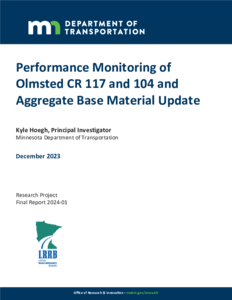Subsurface Joint Deterioration Detection: A MnROAD Blind Test Comparison of Ultrasound Array Technology with Conventional Nondestructive Methods
Date Created
2012-08
Description
Portland Cement Concrete Pavement Thickness Variation Versus Observed Pavement Distress
Date Created
2016
Report Number
2016-30
Description
Concrete Strength Required to Open to Traffic
Date Created
2016
Report Number
2016-01
Description
Implementation of the MEPDG for New and Rehabilitated Pavement Structures for Design of Concrete and Asphalt Pavements in Minnesota
Creator
Date Created
2009
Report Number
2009-06
Description





